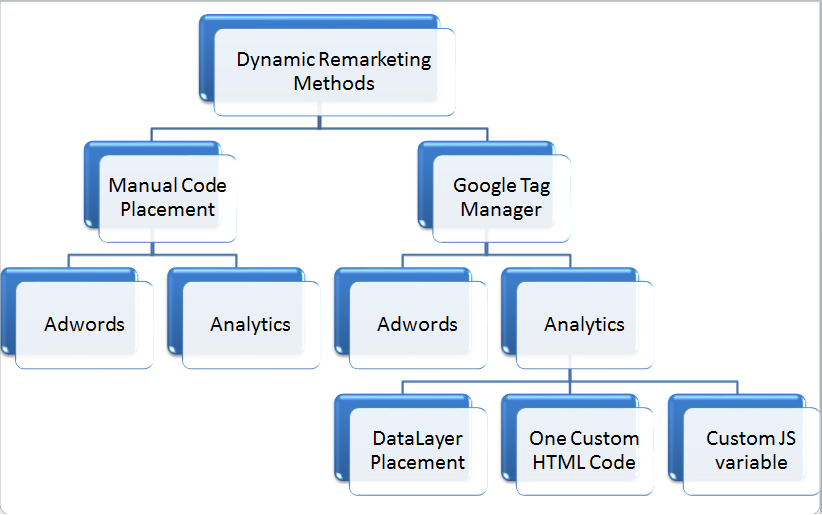Efficient Techniques for Remarketing in Google Analytics
In the world of electronic advertising and marketing, the world of remarketing in Google Analytics stands as an essential device for organizations intending to improve their on-line visibility and conversion prices. With critical audience segmentation, tailored remarketing checklists, and interesting advertisement creatives, organizations can craft tailored campaigns that resonate with their target market. The true success exists in the capability to constantly fine-tune and optimize these techniques based on efficiency metrics and information understandings. By checking out the subtleties of dynamic remarketing and leveraging innovative tracking devices, organizations can open the full potential of their remarketing efforts, leading to raised brand name visibility and consumer interaction.
Audience Segmentation
Making use of audience division is a crucial method in optimizing the efficiency of remarketing projects within Google Analytics. By dividing your audience into distinctive groups based upon their actions, demographics, or rate of interests, you can customize your advertising and marketing messages to be a lot more appealing and pertinent. This method enables you to supply personalized advertisements to particular sectors, raising the chance of conversion.

Moreover, target market segmentation helps you comprehend the varying needs and preferences of various consumer groups, allowing you to craft more engaging advertisement creatives and deals. This targeted method not just improves the effectiveness of your remarketing initiatives but additionally boosts general campaign performance.
Establishing Remarketing Checklists
To properly apply remarketing techniques in Google Analytics, the first action includes creating targeted remarketing listings based upon specific audience interactions. Establishing remarketing listings allows online marketers to sector their internet site visitors into various classifications based on their actions, such as pages watched, products looked for, or activities handled the site. By specifying these sections, online marketers can after that produce relevant and personalized ads that target these specific groups, boosting the possibility of conversion.
Remarketing checklists can be set up utilizing numerous requirements such as web page gos to, period of see, particular objective completions, or perhaps specific occasions triggered on the web site. This level of modification makes it possible for marketing professionals to tailor their promotions to match the interests and choices of each segmented audience, bring about greater involvement and conversion rates.
In addition, remarketing checklists can also be produced based upon information imported from other resources like CRM systems, permitting for even more accurate targeting. By establishing up these targeted remarketing lists, marketing professionals can effectively connect to possible customers who have already revealed passion in their services or items, optimizing the effect of their remarketing projects.
Developing Engaging Advertisement Creatives
After segmenting website visitors into targeted remarketing listings based upon specific audience interactions, the next vital action is to craft engaging advertisement creatives that reverberate with each fractional group's interests and preferences. The efficiency of remarketing projects greatly counts on the capacity of these ad creatives to capture the attention of the audience and drive them to take the desired action.
To create compelling ad creatives, it is vital to understand the one-of-a-kind features of each fractional team (What Is “Remarketing” In Google Analytics?). Tailoring the messaging, visuals, and offers to line up with the interests and preferences of the target market can dramatically increase the opportunities of conversion. Making use of dynamic ads that automatically change material based on this post the customer's behavior can also enhance the personalization of the ad experience

Tracking Efficiency and Optimization
Effective surveillance of project efficiency and regular optimization are important aspects of effective remarketing strategies in Google Analytics. To make certain the performance of remarketing campaigns, marketers need to frequently track essential performance metrics such as click-through rates, conversion prices, and return on ad spend. By keeping track of these metrics, marketers can get useful insights right into the performance of their projects and identify locations for renovation.
In Google Analytics, marketers can leverage devices like conversion tracking and audience division to examine the performance of their remarketing projects. Conversion tracking enables marketing professionals to track particular activities about his that users take after clicking on a remarketing ad, supplying important data on the performance of the project in driving wanted results. Audience division, on the other hand, allows online marketers to separate their target market into different segments based upon numerous criteria such as demographics, behavior, and rate of interests, permitting more targeted and customized remarketing efforts.
Continual optimization is vital for making the most of the influence of remarketing campaigns. Marketing professionals need to use A/B screening to trying out different ad creatives, messaging, and targeting techniques to identify the most efficient techniques. By regularly analyzing campaign efficiency information and making data-driven optimizations, marketing professionals can make certain that their remarketing projects are achieving the preferred results and driving conversions efficiently.
Leveraging Dynamic Remarketing
Utilizing vibrant remarketing can dramatically enhance the importance and impact of targeted ads in Google Analytics. This innovative method permits marketers to reveal customized advertisements to customers who have previously visited their site or used their mobile application. By dynamically displaying product and services that the individuals have actually revealed interest in, vibrant remarketing aids to keep the brand name fresh in their minds and motivates them to return to complete a purchase.

Furthermore, vibrant remarketing campaigns can be automated and enhanced in real-time based on performance data, making certain that the ads stay efficient and relevant. By leveraging dynamic remarketing in Google Analytics, advertisers can produce extra impactful and targeted marketing projects that resonate with their target market and drive outcomes.
Final Thought
To conclude, reliable remarketing strategies in Google Analytics involve audience division, targeted remarketing checklists, compelling ad creatives, performance monitoring, and vibrant remarketing. By concentrating on customized ads, data analysis, and constant optimization, businesses can increase conversion rates and drive engagement successfully. Leveraging tools like conversion monitoring makes certain that advertisements continue to be appropriate and tailored, resulting in overall success in remarketing efforts.
Through calculated audience segmentation, tailored remarketing checklists, and engaging ad creatives, companies can craft customized campaigns that resonate with their target audience. Using vibrant advertisements that automatically change web content based on the customer's actions can also boost the customization of the advertisement experience.
Conversion monitoring enables marketers to track details activities that customers take after clicking on a remarketing advertisement, offering valuable information on the effectiveness of the project in driving desired end results.Utilizing dynamic remarketing can substantially improve the relevance and impact of targeted advertisements in Google Analytics - What Is “Remarketing” In Google Analytics?.In conclusion, reliable remarketing approaches in Google Analytics involve target market segmentation, targeted remarketing lists, engaging ad creatives, performance surveillance, and vibrant remarketing